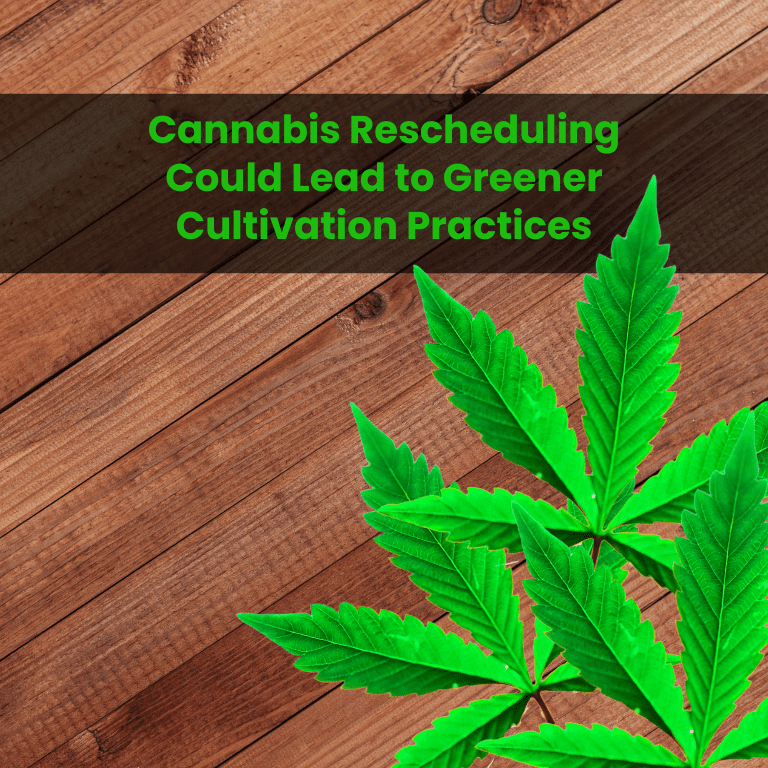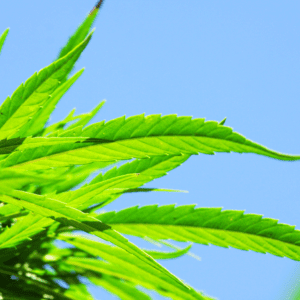Cannabis Rescheduling Could Lead to Greener Cultivation Practices

It is well established that indoor cannabis cultivation facilities have a significant energy and environmental footprint, largely stemming from the enormous electricity draw of horticultural lighting, powerful HVAC-D systems, and the various pumps, fans, and other equipment required to maintain an optimal growing atmosphere. Could rescheduling marijuana bring about changes that help reduce the energy that commercial cannabis cultivators use and improve the environmental impact of the industry overall?
While we can’t fully predict what a post-rescheduling U.S. marijuana sector would look like, we can look to the controlled-environment agriculture (CEA) sector for some examples of how cannabis cultivators might be able to shift production to less energy-intense models.
Benefits for Clean Energy and Energy Efficiency
Rescheduling could open a range of federal programs that have remained out of reach for marijuana businesses under federal prohibition. In 2022, the Biden administration unlocked billions of dollars through the Inflation Reduction Act to support clean energy and agricultural programs.
For example, through grant programs and loan guarantees, the U.S. Department of Agriculture has helped thousands of domestic CEA businesses afford the installation of clean energy and energy-efficiency technologies, such as LED grow lights, advanced HVAC-D, chillers, heat pumps, clean power generation, and more.
Because of the relatively heavy administrative burden associated with applying for USDA money, the program is most appropriate for larger facilities. Thankfully, there is a healthy ecosystem of federal grant assistance organizations that can work with CEA businesses of any size on USDA grant and loan applications.
IRS Tax Credits and Deductions
Businesses that make investments in above-code energy efficiency measures are allowed to claim a tax deduction through the IRS’ energy-efficient commercial building property and energy-efficient commercial building retrofit property programs. For cannabis businesses interested in on-site renewable energy, such as solar photovoltaic panels, the IRS also offers an investment tax credit equal to 30% of the installed project cost.
In most cases, companies will need to show proof to the IRS that the claimed clean-energy and energy-efficiency investments reduce their facility’s energy use at least 25% above code. Not only will businesses have to present a full accounting of the project costs, but they will need to present an energy-savings calculation performed by an outside energy services or engineering firm. I strongly recommend asking a tax adviser for guidance.
Access to Capital for Equipment Upgrades
Cultivation facility developers cite large upfront costs as the main reason they choose not to install advanced, energy-efficient grow equipment. One major promise of rescheduling is that marijuana operators finally will be free of the Internal Revenue Code’s Section 280E, which requires plant-touching companies to pay more in taxes than their mainstream counterparts. Freeing up capital could help countless operators upgrade their facilities to be more energy-efficient.
Power Authority Incentive Programs
Customers of municipal utilities that are served by federally managed “power marketing administrations,” such as the Bonneville Power Authority (BPA) in the Pacific Northwest, could finally be able to participate in their energy-efficiency programs. For example, like many traditional utilities’ energy-efficiency programs, BPA-serviced growers can get 50% back or more for their energy-efficient horticultural LED lighting and HVAC-D purchases.
Regulatory Uncertainty
Currently, there are no national codes for indoor horticulture facilities, though the next round of the International Energy Conservation Code could change that. In the meantime, much like California does with its clean-air standards for vehicles, states would likely retain the right to impose stricter standards than what the federal government requires. For the time being, multistate marijuana operators likely will have to navigate a patchwork of regulations.
What’s Next?
The potential rescheduling of marijuana offers a promising opportunity to transform the industry into a more environmentally sustainable model. Looking at the evolving federal landscape, it is crucial for cannabis businesses to stay informed and proactive in adopting energy-efficient and clean technologies.
Indoor grows allow year-round cultivation, irrespective of outside conditions. But indoor farms use more than 100 times more electricity per square foot than outdoor farms and twice as much as conventional greenhouses. In a future era, when marijuana is eligible for interstate trade, it is not unimaginable that operators will migrate away from expensive indoor-growing models in northern states to less expensive outdoor or greenhouse setups in the West and South.
While the shift could take decades to happen, moving production to more naturally favorable growing climates would dramatically improve the industry’s overall footprint.











